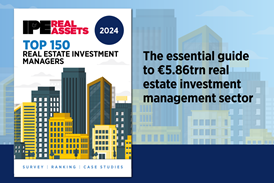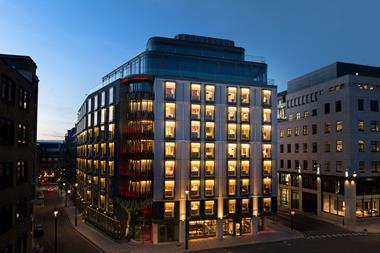The biggest challenge facing the retail sector today isn’t e-commerce, but demographics, Bill Kistler, ICSC’s executive vice president and managing director for EMEA told PropertyEU’s Consumer, Retail & Investment Trends briefing at Mapic on Wednesday.

‘Millennials aren’t focused on purchasing things, but investing in experiences, such as travel and food,’ Kistler said. ‘That’s what’s driving necessary change in the industry, and underlines why innovation is so important.’
Unveiling ICSC’s latest issue of Informed, produced in collaboration with PropertyEU, Kistler explained that ICSC’s inaugural Innovation Forum in Berlin which was held in the German capital this September had been about gathering thought leadership on cutting-edge technology and ideas. ‘ICSC is committed to helping the retail real estate industry understand, innovate and capitalise on the opportunities created by change,’ he underlined.
Nicky Godding, editor of PropertyEU's RetailWatch platform which launched its November issue at Mapic, said that retail was going to change more than anyone could imagine. ‘In this issue, we’re sharing some new research from CBRE about the future of retail,’ she said. ‘CBRE has identified 40 factors which it believes will have a major influence on how shopping takes place, where, when and what will be purchased. We’re sharing the first eight insights.’
The subsequent panel, comprising Marcel Kokkeel, Citycon’s CEO; Herman Kok, head of research at Meyer Bergman; Florencio Beccar, head of retail EMEA at CBRE Global Investors; and Andy Watson, independent investment expert, said that future success was in the hands of shopping centre owners.
Nordics in pole position
Demographic growth is one of the main drivers of value growth,’ noted Citycon's Kokkeel. ’It’s important to be established in capital cities and will continue to be so as time goes on. In terms of the key locations for this trend, the Nordics is in pole position. Stockholm, Olso and Helsinki all make the top five ranking of Europe’s growth cities.’
For Kokkeel, city centre schemes will all be mixed-use in the future. ‘Mono-functional is completely out in terms of urban projects,’ he added. ‘We’re taking this into account with our own refurbishments, adding residential, elderly homes, libraries etc to our own urban shopping centres.’
Kok agreed, pointing out that Meyer Bergman’s current focus was outlet centres and city centres, ‘with a strong mix of functions. For us, strong city centres are not just downtown schemes, but also strategic neighbourhood projects, a big trend in the Nordics as well as the Netherlands'.
New optimism in France
For Watson, exciting times are afoot in France, with Macron’s election bringing a new air of optimism. ‘French cities are going to be the crucible for development,’ he said. ‘Provence is an area to watch. While over the last couple of decades, Mapic attendees haven’t been wowed by local retail schemes, that’s changing now, with projects such as Unibail-Rodamco’s Polygone Riviera proving a game-changer and inspiring further development.’
Beccar underlined that CBRE Global Investors was looking at a range of territories in EMEA, with 50 important cities on its radar. ‘We don’t just look at gateway cities, anywhere with a catchment of 200,000 upwards is already interesting,’ he said.
‘The important thing is owning the dominant shopping centre in that region, as there is an increasing gulf between primary and secondary assets with increasing difficulty attracting tenants to non-dominant shopping centres.’
Tenant merry-go-round
Kok noted that shopping centre owners would need to stay prepared for a further tenant ‘merry-go-round’, evaluating strategies ahead of time. ‘What we’re seeing in the US is that the exit of department store tenants from shopping centres is leaving a hole which is virtually impossible to fill.’
‘While the dead malls phenomenon that is gripping the US won’t be replicated in Europe, not everyone can survive,’ warned Kokkeel. ‘If online shopping does grow by 15-20%, downsizing is inevitable. But there’s no retail apocalypse on the horizon here.’
























